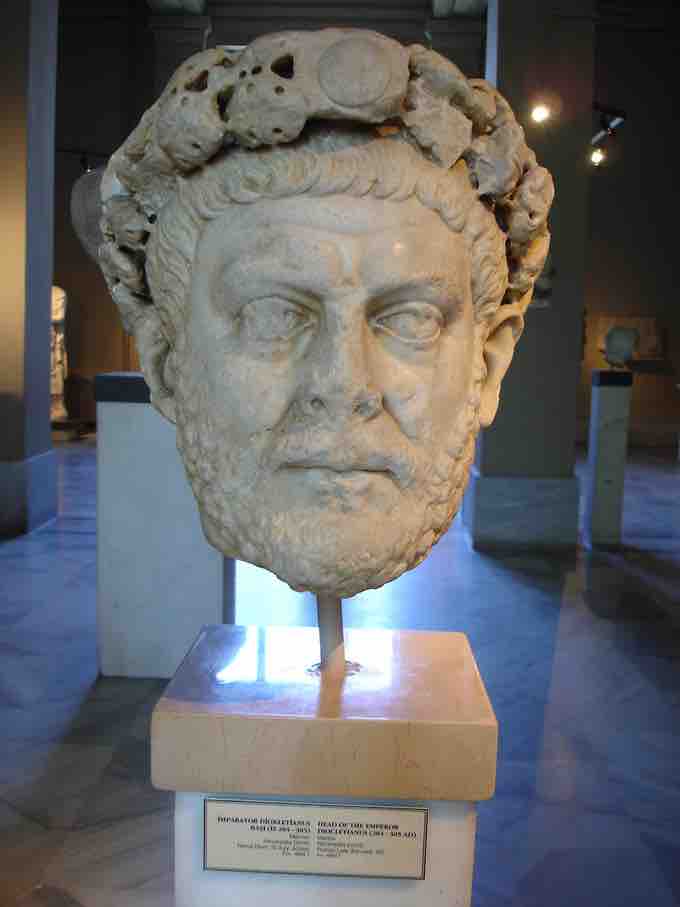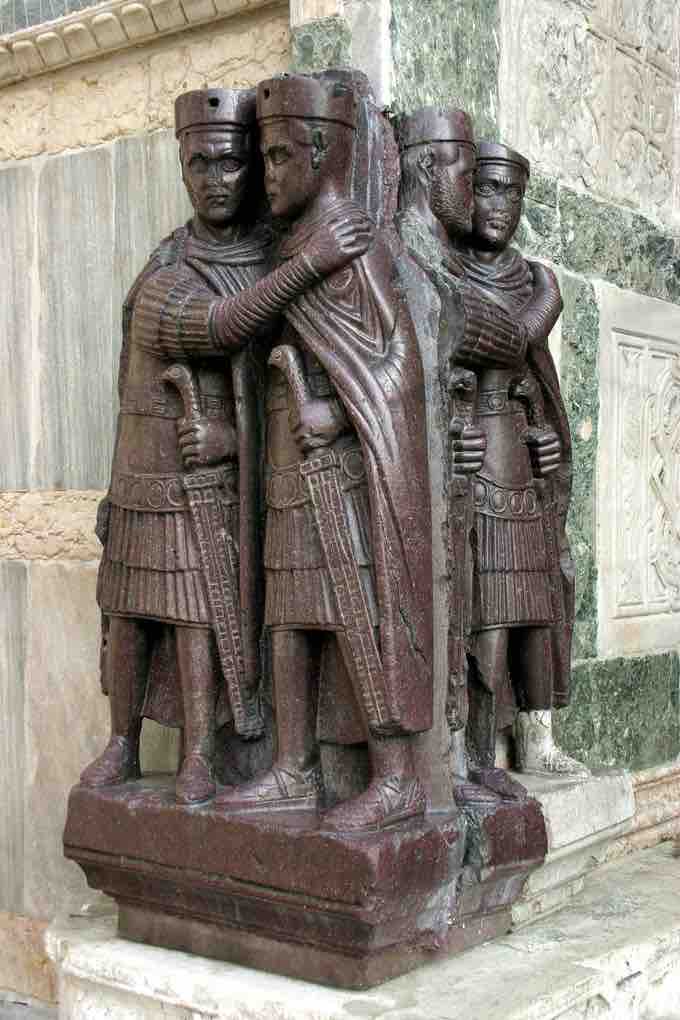The Tetrarchy
Diocletian , a military general from the cavalry, was declared emperor by his legion in 284 CE. He re-established stability in the empire, paving the way for fourth-century political and social developments.

Portrait of Diocletian
284-305 CE.
Diocletian achieved stability by establishing the Tetrarchy, Greek for "rule by four." The Tetrarchy consisted of four emperors reigning over two halves of the empire. Each pair of emperors was given control over either the eastern or western portion of the empire. Of the pair, one was given the title Caesar (a junior emperor) and the other Augustus (the senior emperor). This allowed Diocletian and his fellow emperors to organize the administration of the provinces, separate military and civic command, and restore authority throughout the realm. They further solidified their commitment to each other and communal rule by marrying into each other's families.
Portraits of the Tetrarchs
Imperial portraiture of the Tetrarchs depicts the four emperors together and are nearly identical. The portraiture symbolizes the concept of co-rule and cohesiveness instead of the power of the individual. The idea of the Tetrarchy, which is apparent in their portraits, is based on the ideal of four men working together to establish peace and stability throughout the empire. The medium of the famous porphyry sculpture of the Tetrarchs, originally from the city of Constantinople, represents the permanence of the emperors. Furthermore, the two pairs of rulers - a Caesar and an Augustus with arms around each other - form a solid, stable block that reinforces the stability the Tetrarchy brought to the Roman Empire.

Portrait of the Tetrarchs
Portrait of the Tetrarchs from Constantinople, now in Venice, Italy. Porphyry. c. 305 CE.
Stylistically, this portrait of the Tetrarchs is done in Late Antique style, which uses a distinct squat, formless bodies, square heads, and stylized clothing clearly seen in all four men. The Tetrarchs have almost no body. As opposed to Classical sculptures, which acknowledge the body beneath the attire, the clothes of the Tetrarchs form their bodies into chunky rectangles. Details such as the cuirass (breastplate), skirt, armor, and cloak are highly stylized and based on simple shapes and the repetition of lines. Despite the culmination of this artistic style, the rendering of the Tetrarchs in this manner seems to fit the connotations of Tetrarch rule and need for stability throughout the empire.
Portrait of Galerius
Galerius served in the Tetrarchy from 293 to 311 CE, beginning his career as the Caesar of the West (293-305) under Diocletian and eventually rising to Augustus of the West (305-311) after Diocletian's retirement. During his reign he campaigned, aided by Diocletian, against the Sassanid (Neo-Persian) Empire, sacking their capital in 299. He also campaigned across the Danube against the Carpi (in present-day eastern Romania), defeating them in 297 and 300. He opposed Christianity and oversaw the carrying out of the Diocletianic Persecution, which rescinded the rights of Christians and ordered that they comply with traditional Roman religious practices. However, toward the end of his reign in 311, he issued an edict of toleration.
A porphyry bust of Galerius (c. 300 CE) shows the direction that portraiture was taking in the fourth century. This bust from the emperor's palace features a face that is largely naturalistic with large expressive eyes and eyebrows, similar to those on the group portrait of the Tetrarchs, that lean toward abstraction. These attributes follow those of other sculptures of the Late Antique style and foreshadow the increasingly geometric form that facial features would assume in imperial portraiture and sculpture in general.
Portrait Bust of Galerius
Porphyry. C. 300 CE. Romuliana, Serbia.